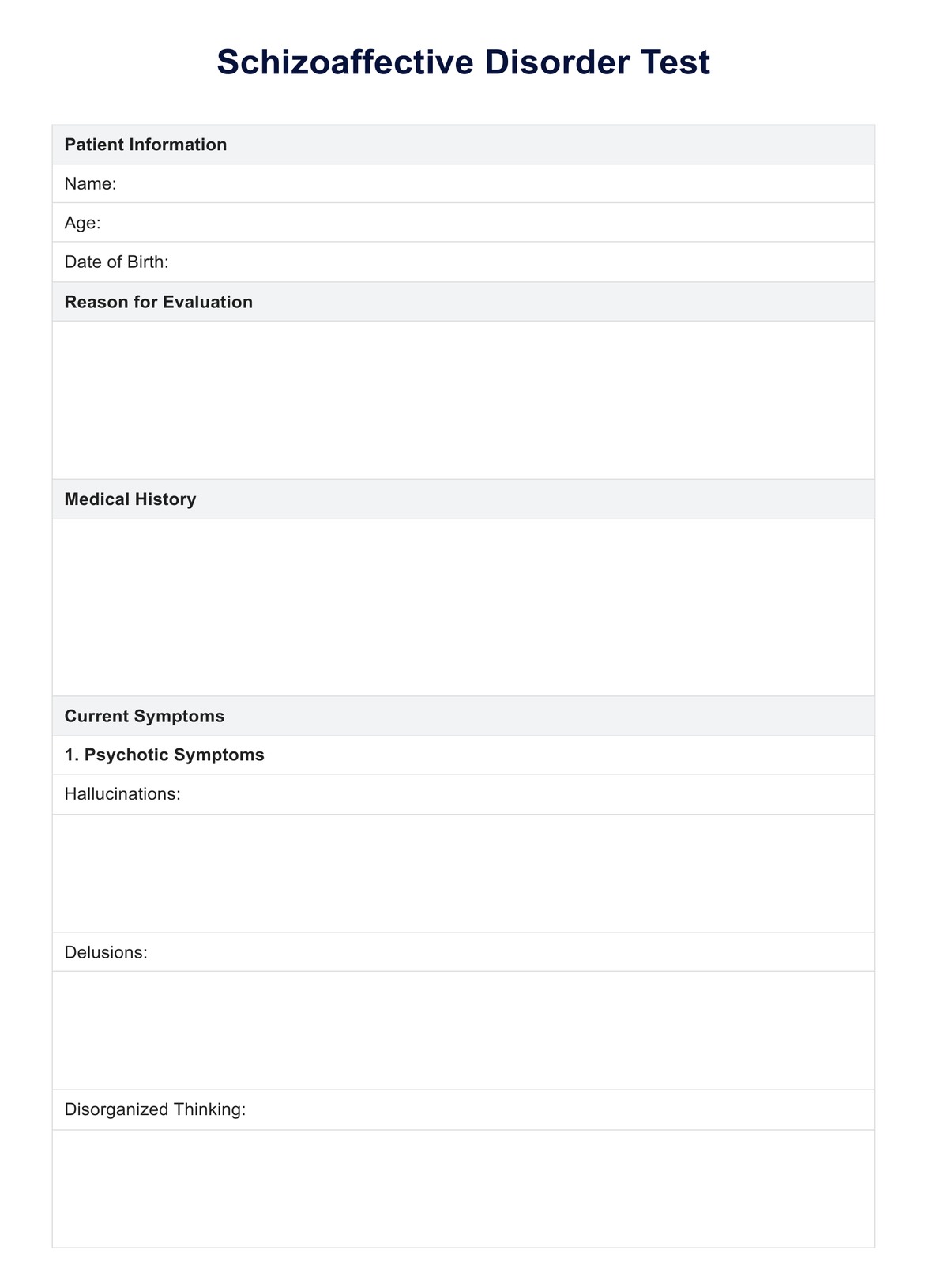Schizophrenia primarily involves persistent psychotic symptoms without significant mood disturbances. In contrast, schizoaffective disorder includes both psychotic symptoms and mood episodes, such as depression or mania.

Schizoaffective Disorder Test
Discover if you may have Schizoaffective Disorder with our test. Get insights and guidance for better mental health. Quick, accurate, and confidential.
Schizoaffective Disorder Test Template
Commonly asked questions
Bipolar disorder is characterized by mood episodes (depression and mania) with or without psychotic symptoms. Schizoaffective disorder combines symptoms of schizophrenia, such as psychosis, with mood episodes occurring concurrently or alternately.
To differentiate schizoaffective disorder from other conditions, clinicians assess the presence of both psychotic and mood symptoms, duration and frequency of symptoms, and rule out alternative explanations such as substance use or medical conditions. Additionally, considering family history and response to treatment aids in accurate diagnosis.
EHR and practice management software
Get started for free
*No credit card required
Free
$0/usd
Unlimited clients
Telehealth
1GB of storage
Client portal text
Automated billing and online payments











